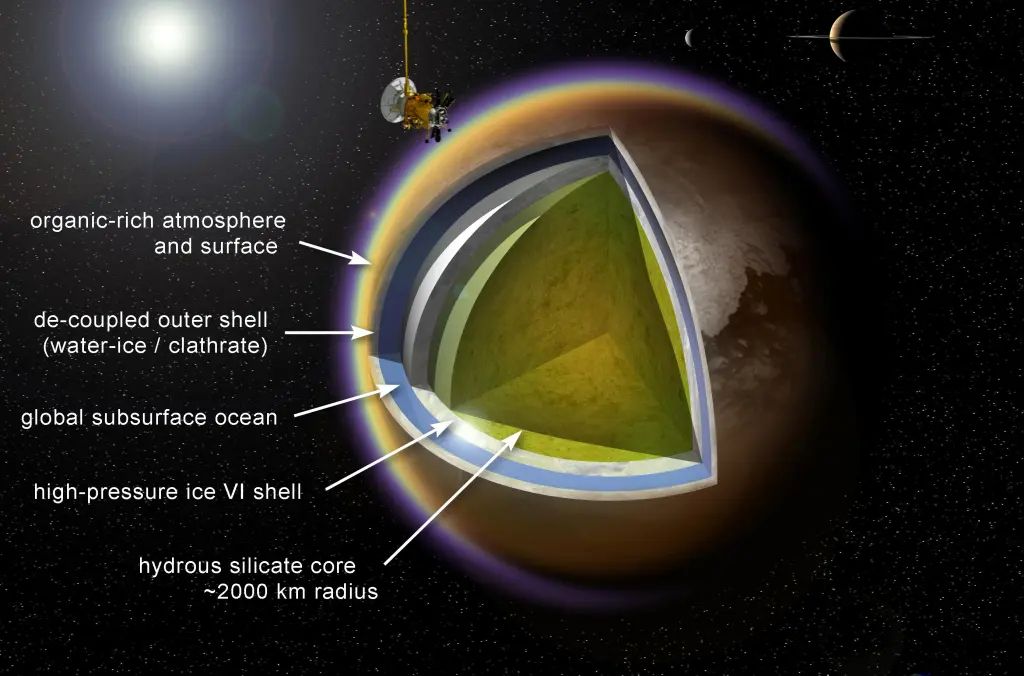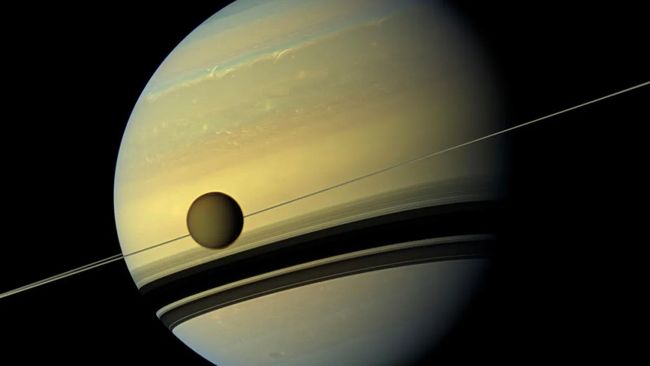Contrary to previous beliefs, it appears that Saturn’s moon Titan may not possess the necessary conditions to sustain life.
The ocean of Titan is 12 times larger than all the oceans on Earth combined, yet it is possible that it lacks life forms familiar to us.
New astrobiological research suggests that Titan’s underground ocean, as well as the oceans inside other icy moons in the outer solar system, may not have the necessary organic chemistry for life. Despite the presence of organic molecules on Titan’s surface, the extremely cold temperatures hinder chemical reactions required for life. However, there is a possibility of a liquid ocean existing deep underground, where it is warmer. This ocean is estimated to have a volume 12 times that of Earth’s oceans combined. Similar oceans are also believed to exist within other moons such as Enceladus, Europa, and Ganymede.
While the presence of liquid water raises the possibility of life, a recent study led by Catherine Neish challenges this assumption. The study suggests that for Titan’s ocean to be habitable, a significant supply of organic molecules from the surface must be able to reach the ocean through comet impacts.
However, Neish’s modeling indicates that the rate of impacts is not sufficient for enough organic material to reach Titan’s ocean.

Neish’s team approximates that only around 7,500 kilograms (16,534 pounds) of glycine, the simplest amino acid, makes its way to Titan’s ocean annually. While this may seem substantial, it is comparable to the mass of a single male African elephant spread across an ocean with a volume twelve times that of Earth’s oceans. In other words, it’s just a drop in the ocean.
Neish explained, “We initially assumed that 65% of the melt deposits would sink all the way to the ocean. Recent modeling work indicates that this is likely an overestimation. Even in the most optimistic scenario, the amount of organics entering Titan’s ocean is insufficient to sustain life.”
While this may be the case, there are alternative theories. For instance, on Europa, where organic molecules are scarce on the surface, it is hypothesized that hydrothermal vents could exist on the seafloor, where the ocean meets the moon’s rocky core. These vents could release various molecules and initiate complex chemical reactions that might support life. The James Webb Space Telescope has also detected evidence of carbon in Europa’s ocean, suggesting that carbon dioxide has risen from the ocean to the moon’s surface.
Therefore, it raises the question: could a similar process occur on Titan, where organic material emerges from the moon’s interior rather than its surface?

Neish does not dismiss the idea, mentioning that colleagues like Kelly Miller at the Southwest Research Institute in San Antonio, Texas, are looking into the possibility. However, Neish does emphasize a specific caveat.
“There is a concern about whether the organics originating from the interior would be conducive to life,” she explained. “We believe they might consist mainly of aromatic compounds, making it challenging to create biomolecules – such as amino acids – from such compounds.”
Although we are still a considerable distance away from directly exploring the oceans of these icy moons to definitively determine if they harbor life, Neish’s research presents some exciting prospects for NASA’s Dragonfly mission to Titan, where she serves as a co-investigator. Dragonfly is a helicopter mission, partly inspired by the Ingenuity Mars helicopter, scheduled to launch in 2028 and reach Titan in 2034. It will survey the moon from the air, landing to collect samples for analysis. If Neish’s findings are accurate, it could indicate numerous impact sites on the surface where liquid water mixed with organics, potentially initiating complex chemistry before refreezing and submerging. By examining these locations, scientists could gain insights into the prebiotic chemistry that ultimately led to the emergence of life on Earth.
The findings from Neish’s team were published on 2nd February in the journal Astrobiology.
Do not forget to share your opinion with us to provide you with the best posts !




0 Comments